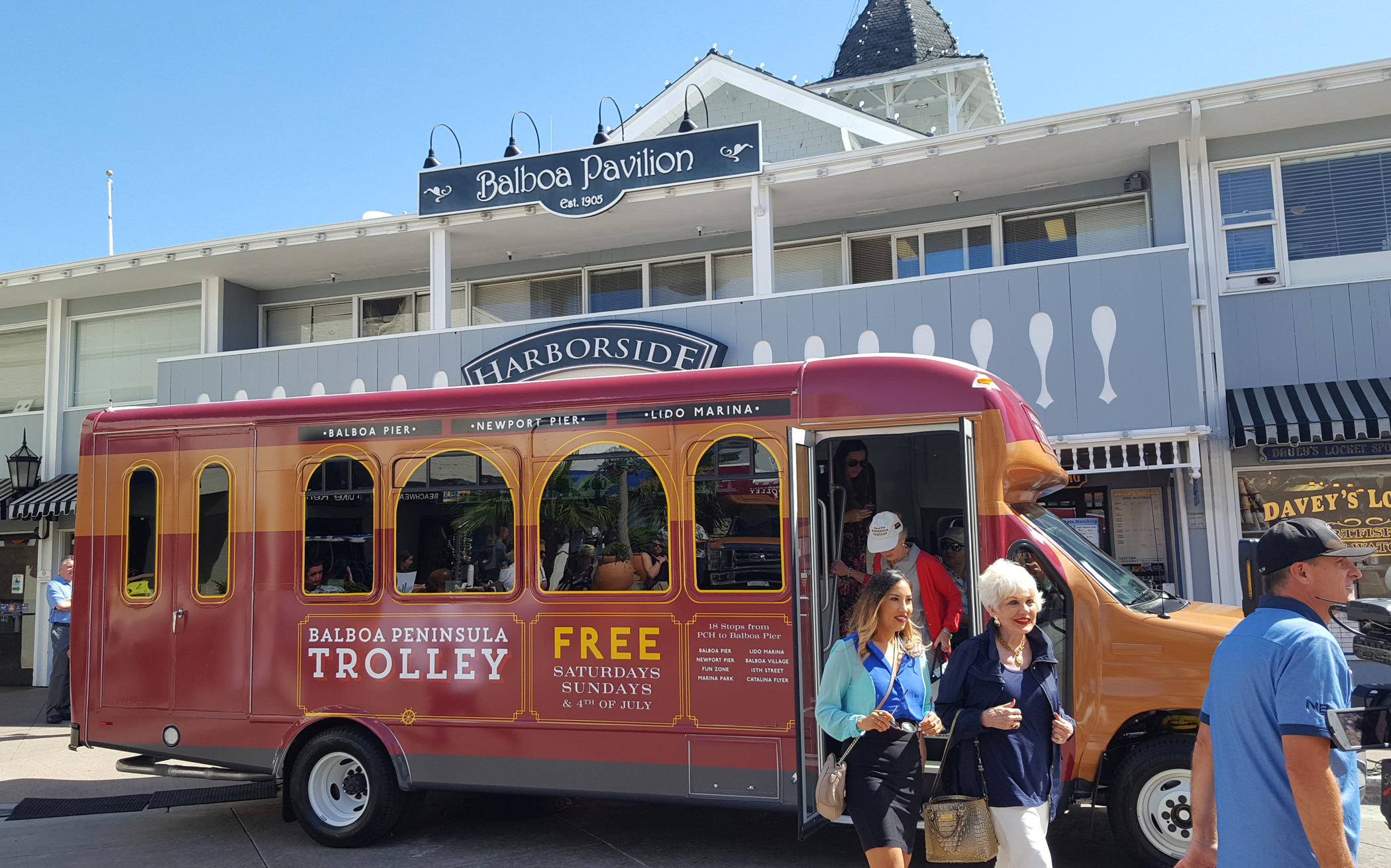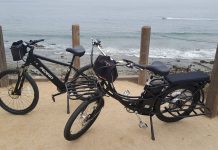
— Photo by Christopher Trela ©
The pilot program for a free shuttle service serving the Balboa Peninsula ended on Labor Day, but people are still talking about it.
The Balboa Peninsula Trolley carried 23,560 passengers over 26 days, according to a presentation by city staff to the Balboa Village Advisory Committee on Sept. 13.
Ridership more than doubled officials’ expectations. The city’s goal of an average 437 daily riders was left in the trolley’s dust as the summer recorded an average of 906 average daily riders.
The trolley is likely to roll again next year.
Newport Beach Deputy Community Director Brenda Wisneski said the BVAC reviewed the data collected over the summer and recommended that the city use funds that they receive from the Air Quality Management District to expand the program next year.
The committee also asked city staff to consider the following changes to next year’s schedule: Begin the service on Memorial Day Weekend; add Fridays to the lineup; add a fifth shuttle during busy times; start daily service later in the morning; improve signage and maps; and add a stop at 28th Street and Via Lido.
“Once we receive estimates on the suggestions, the BVAC’s recommendations will be presented to the City Council,” Wisneski wrote in an email.
Not everyone in the area is on board for another year of the trolley though. Peninsula resident Mike Glenn has been a vocal opponent and said he saw either empty seats or sparse passengers. The cost, he said, is much higher than an Uber or other ride share option.
“In a world where we have buses failing across the nation because free market solutions like Uber, Lyft, and the Downtowner are making them cost-ineffective, the idea to present a bus and paint it like a trolley is not only arcane—it is an outright abuse of taxpayer dollars,” Glenn wrote in an email.
A presentation to the BVAC reported that the city spent $126,000 in operating expenses for the program, or $5.35 per rider. Glenn said the program is unnecessary, and estimated that the cost is closer to $9 per rider.
He pointed out that there is currently a free solution already in play: The Downtowner, which offers free rides on the peninsula in fully-electric, open-air vehicles. The business model is essentially a mobile billboard, but they give rides to people who summon them through the app, Glenn noted.
“This is a free market solution that costs taxpayers $0,” he explained. “Instead of the government creating businesses to compete with the free market, they should simply allow the market to thrive on its own.”
Sam Knapp, head of California operations for the Downtowner service, said the trolley service did not impact his ridership numbers, but hurt their credibility with advertisers and sponsors.
He said they’ve had discussions with the city about funding, but that the city decided to go the trolley route. It would have helped grow their locally-developed business, he added. If the Downtowner had received as much funding as the trolley did, it would have been more successful, Knapp commented.
“Dollar per dollar, we could have transported more people,” Knapp said.




